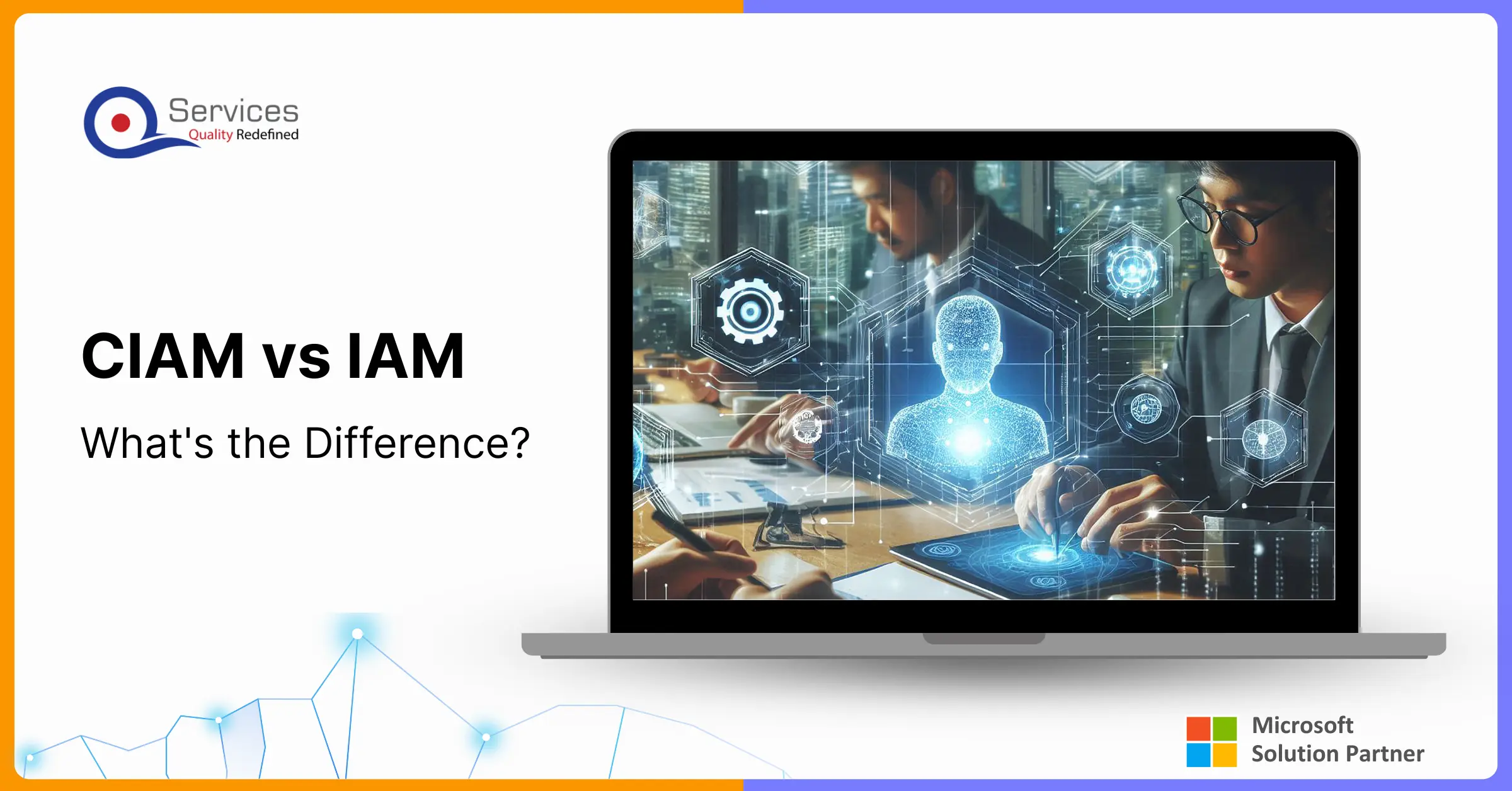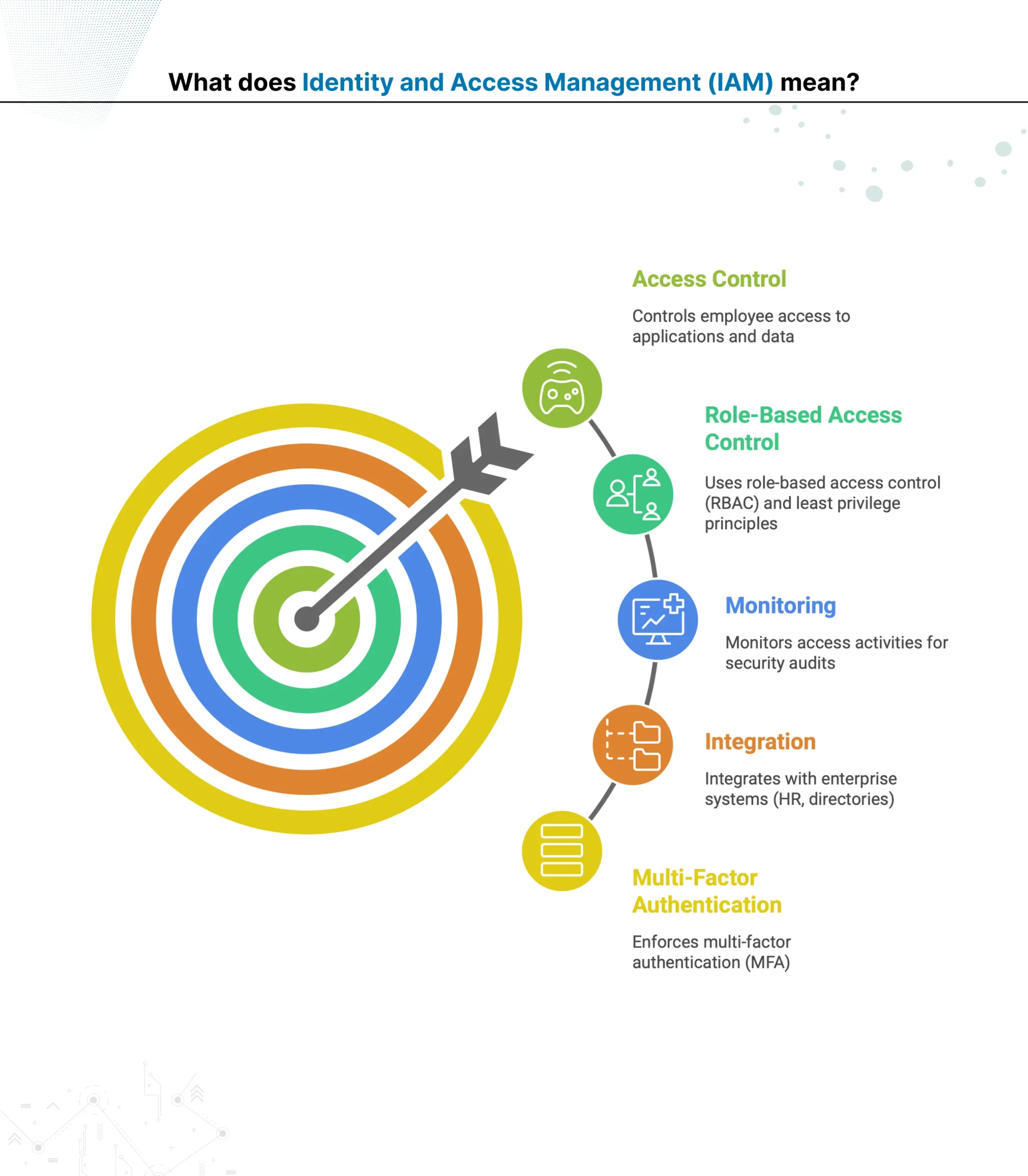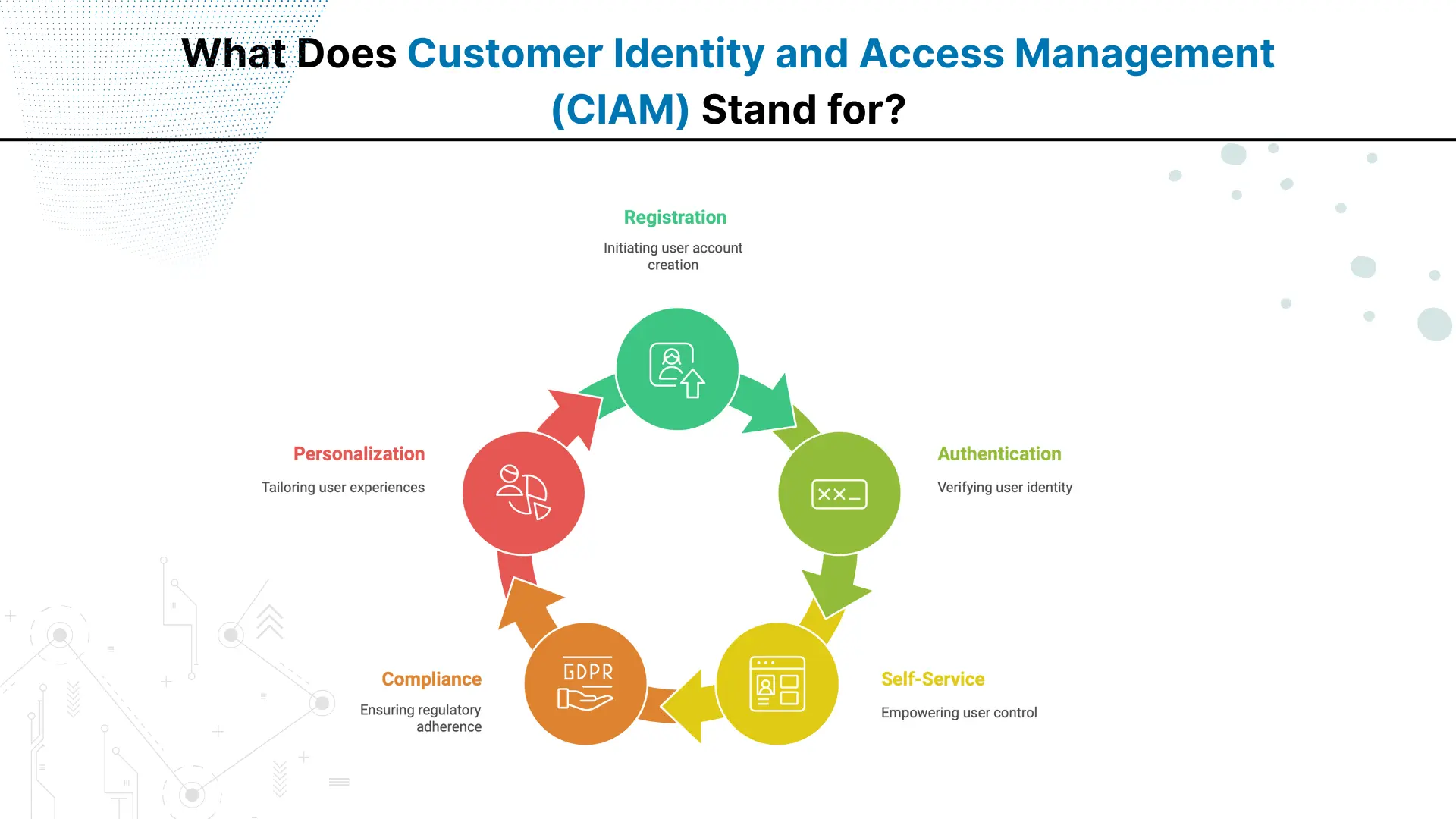



Get free Consultation and let us know your project idea to turn into an amazing digital product.

Both customer-based identity management and internal user access control systems focus on protecting digital resources. However, there are distinct differences between them, as outlined in the table below.
The purpose and compliance requirements of CIAM and IAM differ, so their security features also vary. IAM is designed for securing internal organizational access, while CIAM is for safeguarding a large external customer base. Here is a descriptive CIAM vs IAM security feature comparison.
IAM (Identity and Access Management) is designed to protect internal users such as employees and contractors. It enforces strict access controls like multi-factor authentication (MFA), role-based permissions, and continuous monitoring. These features help prevent insider threats and unauthorized access to sensitive company resources.
Customer Identity and Access Management (CIAM) manages millions of external users, including customers and visitors. It combines security with convenience to maintain a positive customer experience. It includes MFA, data encryption, fraud detection, and compliance with privacy regulations such as GDPR and CCPA. CIAM also supports smooth login options like social logins and single sign-on (SSO) to reduce barriers for users.
Verdict:Both IAM and CIAM offer robust security, but focus on different user groups and risks. IAM applies tighter controls for fewer trusted users with high privileges. CIAM secures a large and diverse user base by combining security with user-friendly access.
CIAM focuses specifically on customer identity management, prioritizing seamless and personalized experiences. In contrast, IAM primarily addresses internal access needs, making CIAM the better choice for improving customer experience. Here are some benefits of CIAM over traditional IAM:
1. Streamlined Customer Onboarding: CIAM offers easy registration options like social login and single sign-on (SSO). This reduces friction for customers signing up or logging in, improving satisfaction from the start.
2. Personalized Interactions: CIAM collects and analyses customer data securely, enabling businesses to tailor content, offers, and communications. This personalized approach enhances engagement and loyalty.
3. Enhanced Security Without Sacrificing Usability: CIAM balances strong security features like multi-factor authentication (MFA) with user-friendly processes. Customers experience safety without complicated steps that deter usage.
4. Easy Customer Access Management: CIAM supports self-service options such as password resets and profile updates, empowering customers to manage their accounts independently and conveniently.
Share your project idea with us. Together, we’ll transform your vision into an exceptional digital product!

Scalability and integration complexity are two main factors organizations consider before deploying any identity solution. CIAM and IAM differ greatly in how they manage large user volumes and connect with systems.
CIAM vs IAM scalability for large organizations highlights a clear gap. IAM handles internal identities, generally in the hundreds or thousands, focusing on secure role-based access for trusted employees.
In contrast, CIAM supports millions of external users across regions. Its architecture uses elastic infrastructure, distributed databases, and global load balancing to maintain performance during peak demand.
CIAM vs IAM integration with cloud applications also shows different priorities. IAM connects mainly with internal enterprise systems and selected cloud services. CIAM integrates widely with SaaS platforms, mobile apps, e-commerce systems, and public cloud environments, using APIs, SDKs, and identity federation standards like OAuth 2.0 and SAML for unified access.
Verdict: IAM scales for internal teams; CIAM scales globally and integrates broadly, making it ideal for high-volume, customer-facing environments.
Customer Identity and Access Management (CIAM) and traditional Identity and Access Management (IAM) are essential, but the right choice depends on your organization’s users, infrastructure, and security objectives. Here are some of its varied use cases:
If a company with no customer-facing applications wants to implement secure access control, it should choose IAM to:
Although rare, some companies require only CIAM when their operations are fully customer-centric. In such cases, CIAM helps to:
Almost all large banks and multinational enterprises implement both solutions to:
The differences between CIAM and IAM highlight the importance of aligning identity management with business goals. IAM is purpose-built for securing internal workforce access, typically managing hundreds or thousands of trusted users through strict role-based controls.
CIAM, on the other hand, is designed to handle millions of external identities, combining strong security with user-friendly features for customers, partners, and application users.
Both solutions protect digital resources, but their scope, target audience, and integration capabilities vary. The right choice depends on whether your priority is internal workforce management, large-scale customer engagement, or both.
By aligning the solution with your user base and operational needs, organizations can enhance security while ensuring a seamless, compliant, and scalable access experience. Regulatory Compliance Automation
CIAM manages external customer identities for millions of users, while IAM controls internal employee access to company resources and applications.
Small businesses with customer-facing applications can use CIAM solutions, though many start with basic authentication before scaling to full CIAM platforms.
Most organizations need both systems – IAM for internal workforce management and CIAM for customer-facing applications and external user access control.
CIAM natively supports social logins from Google, Facebook, and LinkedIn, while traditional IAM typically focuses on enterprise directory integrations.
CIAM must comply with privacy regulations like GDPR, CCPA, and regional data protection laws governing customer personal information and consent.
CIAM costs vary by user volume and features, but per-user pricing often decreases at scale compared to IAM’s fixed licensing.
CIAM offers self-service password resets and social login alternatives, while IAM typically requires IT support for password management and recovery.
Yes, CIAM platforms offer APIs and integrations with popular CRM, marketing automation, and customer experience management tools for data synchronization.
Social login, passwordless authentication, SMS OTP, and biometric authentication provide the best user experience while maintaining security in CIAM.
CIAM allows self-registration and automatic provisioning, while IAM requires manual admin provisioning or HR system integration for employee onboarding.

Have a one on one discussion with our Expert Panel

For decades, traditional banking systems handled only basic transactions. The digital era exposed their limitations in speed and adaptability. Evolved core banking now powers seamless, future-ready financial services.

As digital expectations grow, customers now demand speed, ease of use, and 24/7 availability. To meet these demands at scale, digital-only banks choose business process automation in the banking industry to deliver consistent, responsive, and personalized service.

Processing payments involves multiple steps, such as verifying account details, checking records, and ensuring timely execution. In the current financial environment, manual approaches slow down these processes and increase the risk of errors.

Founder and CEO

Chief Sales Officer
